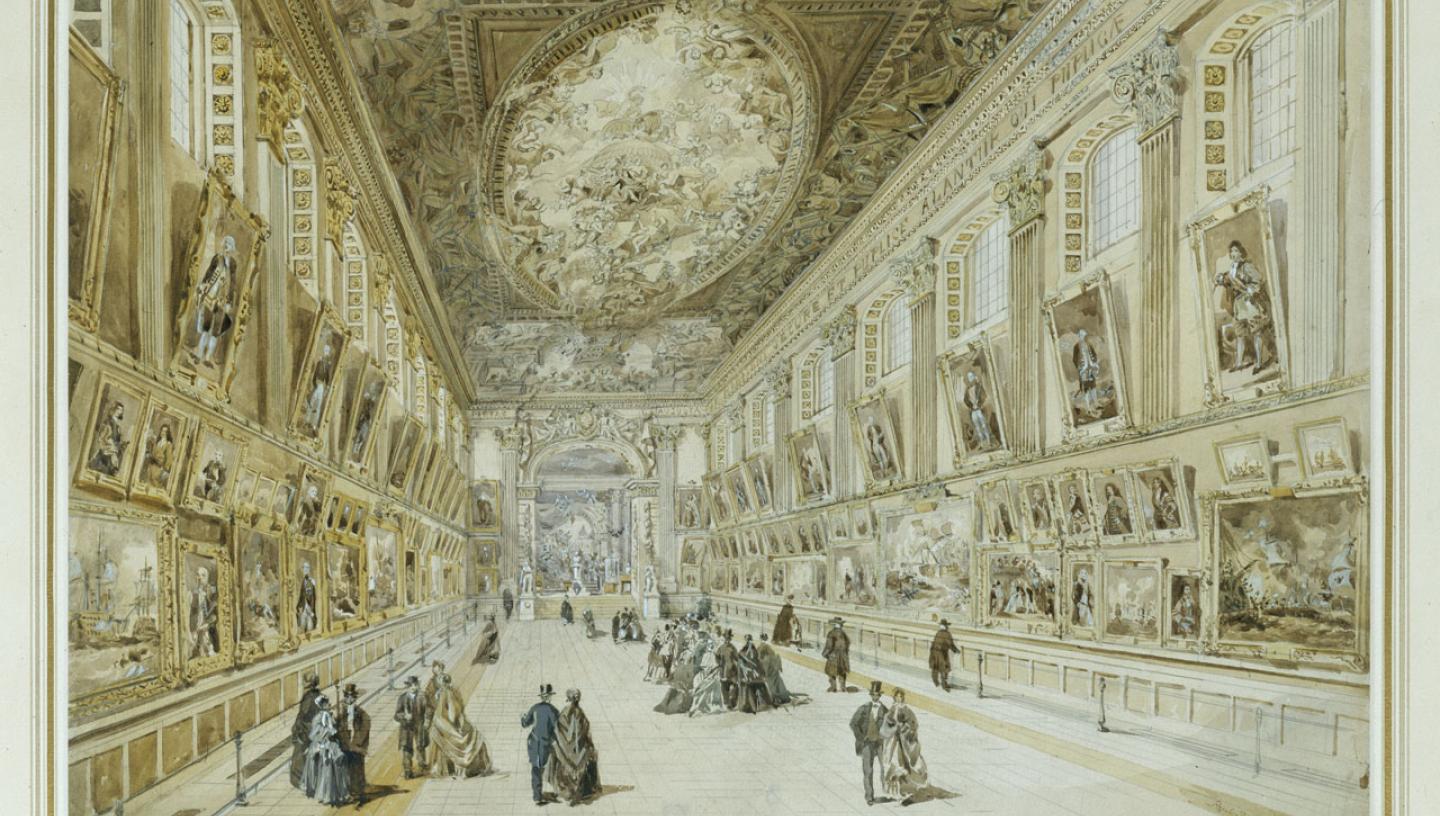
Whilst cataloguing a collection of papers from the early 19th century, we came across an intriguing note.
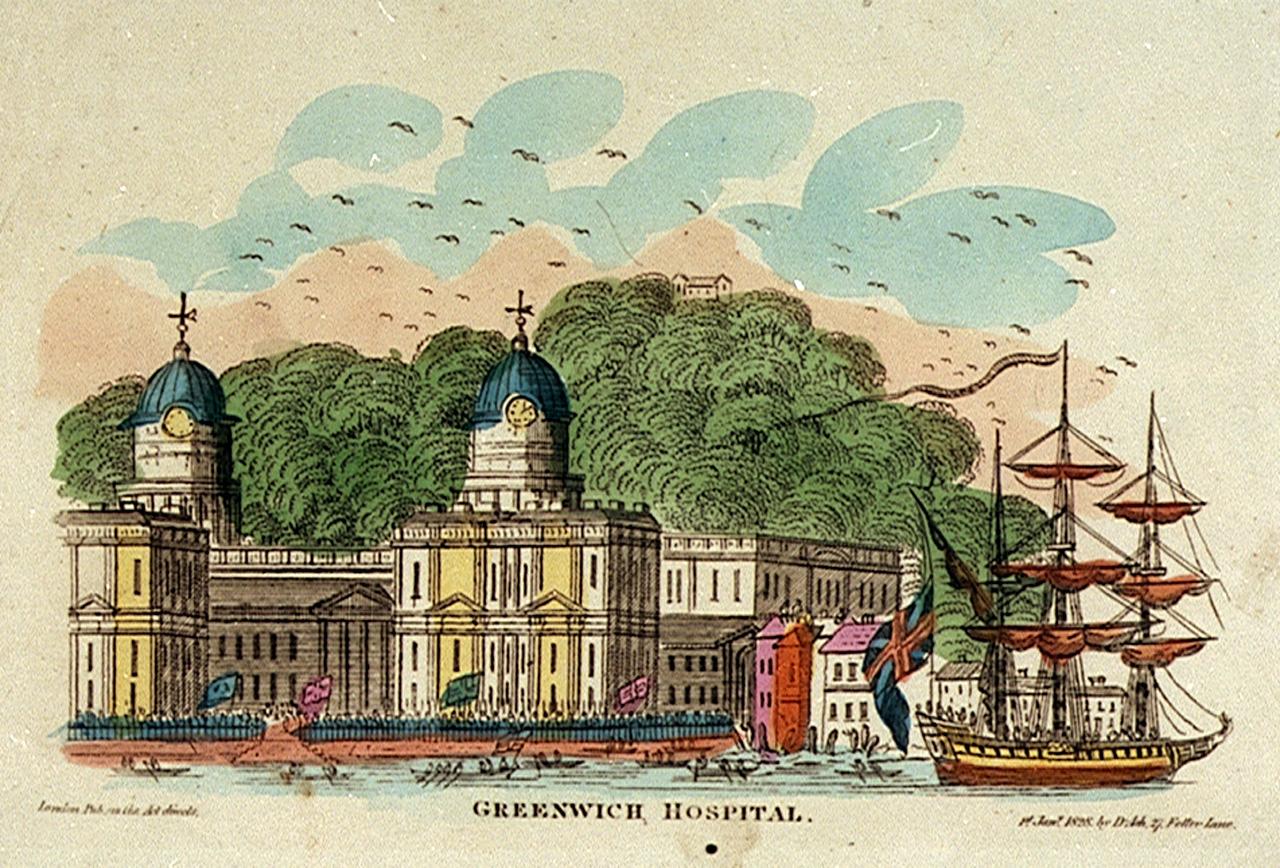
Visit the Caird Library and Archive
The Royal Hospital for Seamen at Greenwich (or Greenwich Hospital as it was commonly known) provided accommodation for retired and wounded naval and merchant seamen.
The Painted Hall at the Hospital had originally served as a canteen for the residents, but by 1823 was no longer in use. A printed address dated 23 October 1823, written by the Hospital's secretary, Edward Hawke Locker, to its Directors laid out a suggestion for the future of the Hall.
His ambition was to establish the Painted Hall as a naval gallery and museum dedicated to Britain’s maritime heritage, which he believed was long overdue. In the address he states:
'These noble rooms present an admiral position for a national gallery…to commemorate the splendid services of the Royal Navy of England. …Notwithstanding the long and brilliant career of Victory which this Nation has enjoyed at Sea, it is remarkable how little patronage has been given to Marine Painting.'
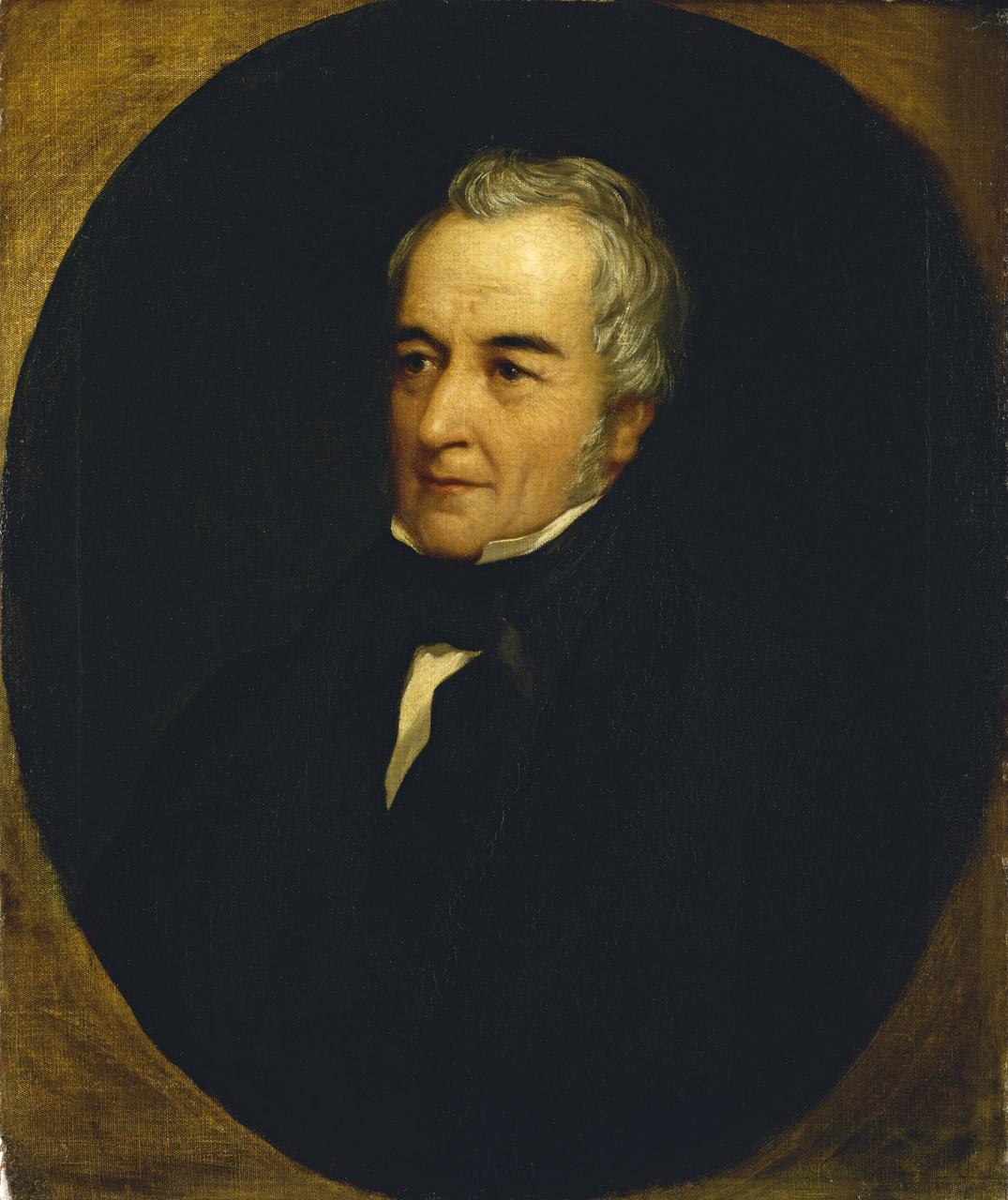
He succeeded in his ambition, securing the patronage of the reigning monarch King George IV who agreed to the transfer of artworks from the royal palaces to the Painted Hall. Other royal and private donors contributed as well, not just paintings but sculptures, ships models and relics.
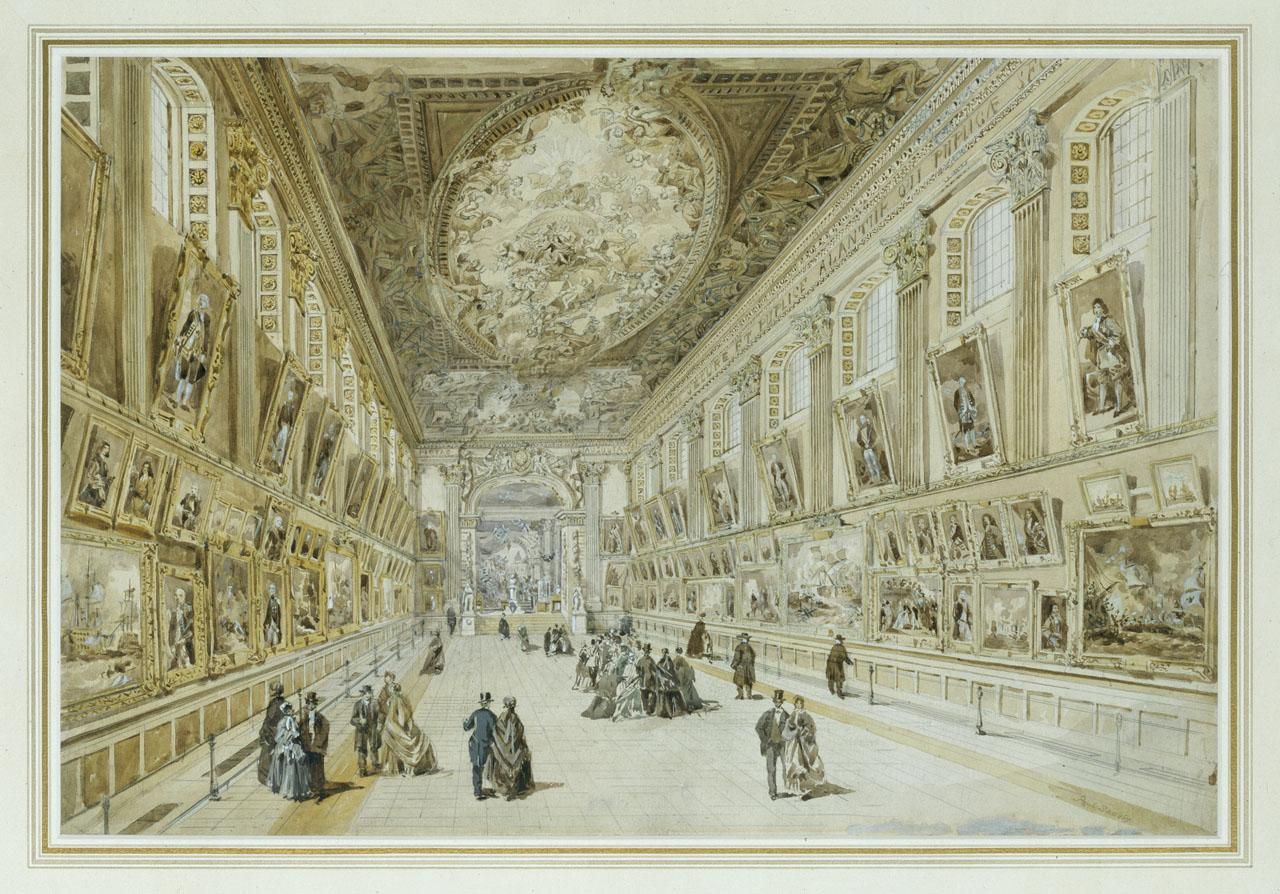
In 1936 the majority of these artworks were transferred to the newly-established National Maritime Museum. Perhaps the most famous item from the Museum’s Greenwich Hospital Collection is ‘Nelson’s coat’ from the Battle of Trafalgar, currently on display in the Museum’s ‘Nelson Navy Nation’ gallery.
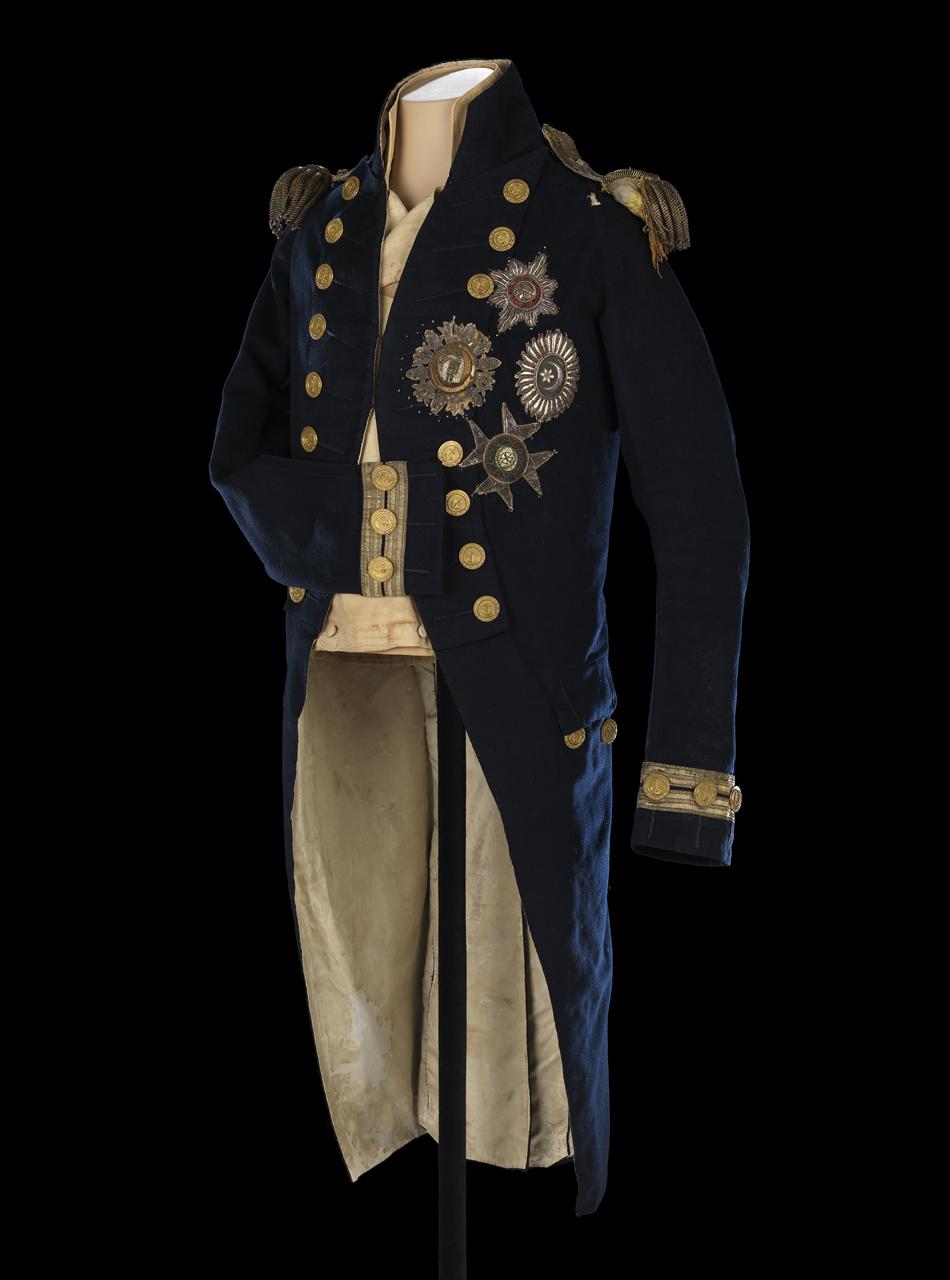
In addition to his plans for a naval gallery, Locker was also keen to abolish the admission charge to the Painted Hall (and Chapel), which he felt was unnecessary and inappropriate for such an institution. In his 1823 address to the Directors he stated
'I beg to draw your attention to the practice of receiving money from Strangers who visit the Painted Hall and Chapel. Although long established … it is so revolting to the liberality which ought to prevail in a great National Institution, that I cannot but hope you will take this opportunity of abolishing it.'
However this ambition took longer to achieve. On 18 October 1841 The Times reported on the Select Committee of the House of Commons on the subject of national monuments and works of art. By this time soldiers had been granted free admission to the Painted Hall for several years, but everyone else was charged 3d. The Select Committee recommended that
'for the gratification and instruction of the people, the Painted Hall should be opened to the public for some hours every day, free of charge, in the same manner as the National Gallery and Hampton Court Palace.'
However Samuel Parsons, a boatswain at the Painted Hall who was interviewed by The Times, was decidedly unenthusiastic about the prospect free entry for all. Asked if he thought the Hall and artworks might be damaged if free admission was introduced, he replied
'Yes I do think so. For instance we are obliged to have a man continually in the upper part of the hall, or the lower order might damage the models and the windows, and the case containing Lord Nelson’s coat.'
Despite the boatswain’s reservations, free admission to the Painted Hall and Chapel was granted in 1842, although only on Mondays and Fridays, from 10am to 7pm in the summer, and 10am to 3pm in the winter.
Anyone with an interest in the history of the Museum’s collections or the historic buildings on this site in Greenwich can visit the Caird Library Reading Room where we have a range of books on these subjects on the open access shelving. Relevant titles include:
Greenwich: an architectural history by John Bold (Item ref: PBF3385)
Art for the Nation: the oil paintings collections of the National Maritime Museum by the National Maritime Museum, Great Britain (Item ref: PBF8562)
The Painted Hall is still free to enter, and its famous ceiling painted by Sir James Thornhill is currently under renovation.